Spotted Gum, syn. Eucalyptus maculata, MYRTACEAE
| 
| (donherbisonevans@outlook.com) & Christine Ashe |
|
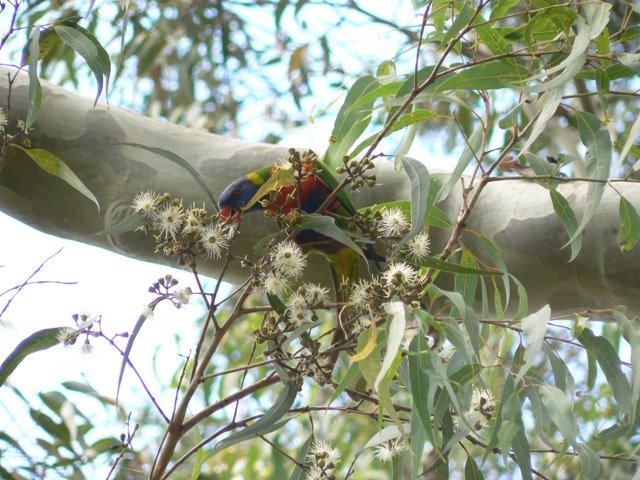
| 
| (donherbisonevans@outlook.com) & Christine Ashe |
|

Rainbow Lorikeets ( Trichoglossus haematodus) visit our area in Autumn. Some people are lucky enough to have daily visits from these beautiful birds but we only see them occasionally. They turn up when their favourite gums are flowering. In Autumn it is the turn of the Spotted Gums. These gums produce oodles of nectar, and as rainbow lorikeets enjoy nectar as part of their diet they have been spending long hours partying at the tops of the trees, where most of the flowers are to be found.
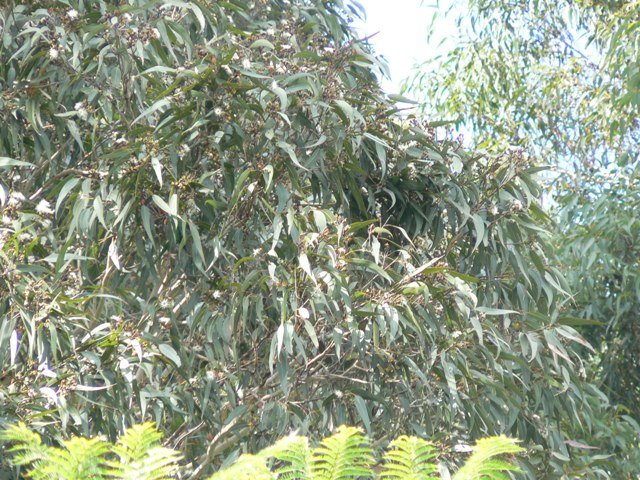
Corymbia maculata are very tall trees that flower way, way up high, all over the top of the crown, making their flowers difficult to see from ground level. Even flowers closer to the ground merge in well with the leaves and the sky; particularly when the skies are cloudy and grey as they are much of the time in Autumn. Even the multi-coloured gaudy rainbow lorikeets manage to disappear into this canopy. You can see movement amongst the branches overhead but the birds themselves are difficult to see. They are not difficult to hear though because their distinctive noisy squabbling sounds are unmistakable as they greet each other and discuss the relative merits of this yearís banquet,
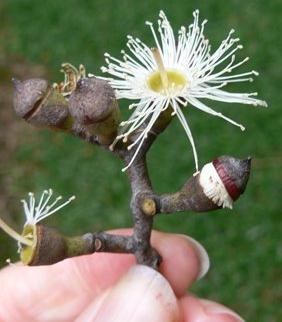
Often the first indication of the flowering of Corymbia maculata; (which incidentally doesnít occur every year, but every few years - estimates vary, depends who you talk to), is the rich smell of honey. These trees have seriously delicious smelling flowers. Take a look around underneath the canopy and you will see the odd fallen white to cream flower, or a little twiglet containing a couple of flowers and buds. These have been pinched off by over enthusiastic birds or possums.
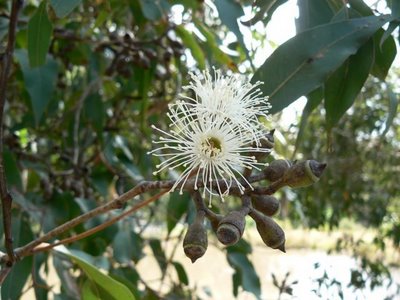
The bud caps have a little point and are generally clustered in groups of 3 to 7 on small leafless shoots in axils of leaves towards the ends of the branchlets. In typical gum fashion the bud cap is pushed off by the unfurling stamens.
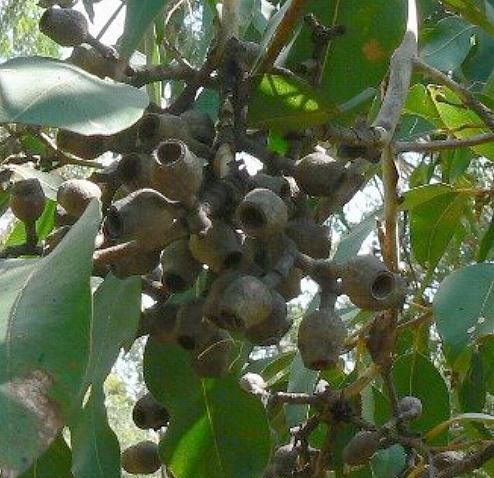
The flowers develop into large woody barrel shaped gum nuts with deeply enclosed valves
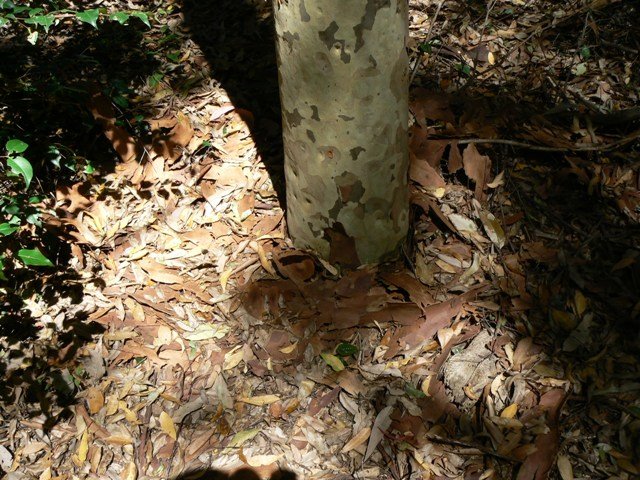
Corymbia maculata has bark that sheds right to the ground in small pieces. They donít make quite the same mess as other similar looking gums because the shed bark can be cardboard thin, unlike Eucalyptus propinqua, which sheds huge slabs of quite thick bark.
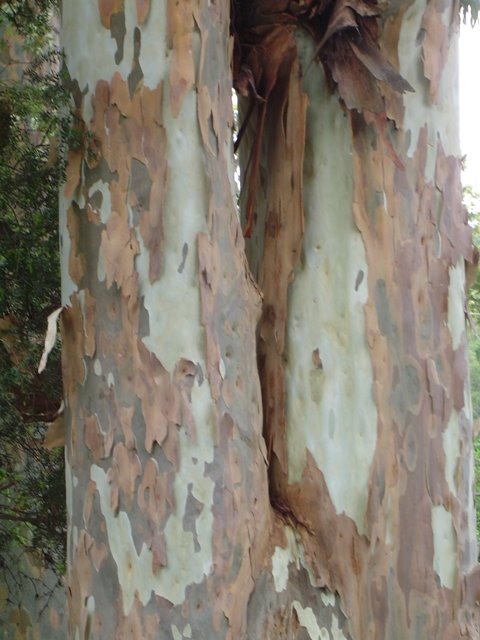
Some people think the Spotted Gums are so named because when they are shedding their bark they can have quite a mottled appearance. I believe the name may have been given because of the dimples on the tree trunk. Many look as if a giant has come along and given them little squeezes and pokes, almost as a child might with a piece of play dough and a stick. Some gums are more dimpled than others, and those are generally unmistakable Spotted Gums due to the markings on the trunk.
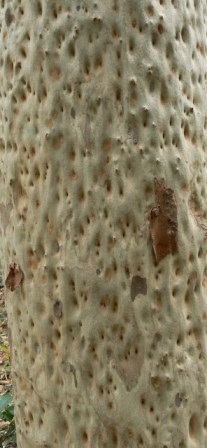
However there are specimens with just a few dimples. Spotted Gum is not a good timber to use for sheds or other farm buildings as it is susceptible to Lyctid borer attack and only lasts for a few years before needing replacement. This I know from bitter experience. However it is a useful tree for building projects where it can be properly protected. Spotted Gums are well loved by bees and their keepers. They have high yields of nectar with a very high sugar content, particularly in the mornings and evenings. If you have Spotted Gums flowering in your area you should be able to smell their honey scent very easily, particularly in the evening.
Bees and birds arenít the only animals appreciating the nectar of the Spotted Gums. The evenings and nights bring out the bats who squeak and squabble as they take their share of the nectar and sometimes the grunt of a possum or two as they argue over whose tree it is joins the cacophony.
Once all the mottles fade the Spotted Gums can look very like a grey gum, except for those very dimpled specimens.
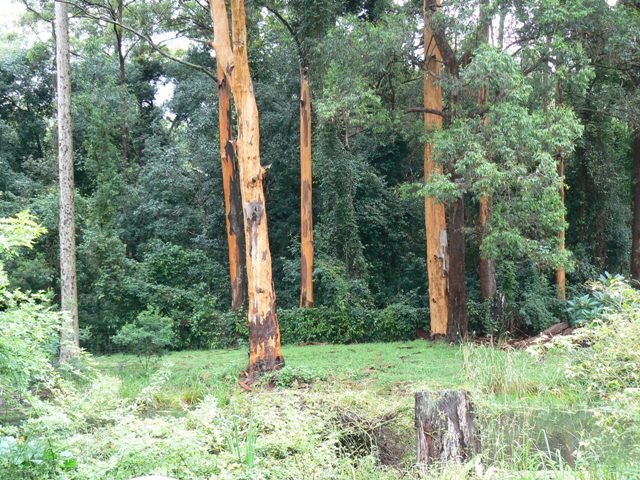
Here we have a Spotted Gum on the far left and a group of Grey Gum (Eucalyptus propinqua) on the right. Easy to see which is which now, but just wait until they all fade to a uniform grey. Not so easy then.
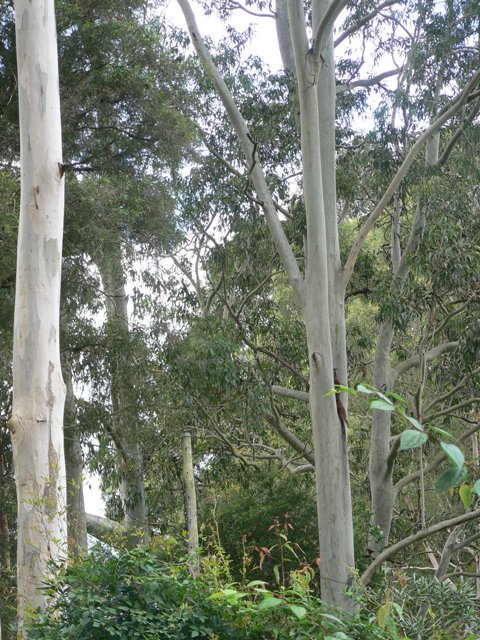
The Spotted Gum is often mistaken for a Grey Gum, and vice versa. At certain times of the year they are difficult to tell apart. All are tall straight trees with smooth light grey bark for some of the year. When the Grey Gums and the Spotted Gums have finished discarding last yearís clothes and have freshly gained their smooth light grey bark they are again very much alike. Some times you have to watch the trees for a few seasons before you can be sure what they are.
 butterflies |
 caterpillars |
 moths |
(updated 17 June 2008)